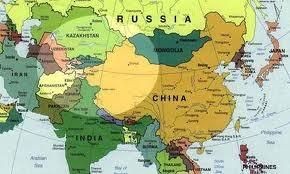BISHKEK (TCA) — Landlocked countries in Asia, including in Central Asia, face similar economic challenges such as the need of better transport connectivity and diversification, and therefore need sustained support from international donors and development partners. We are republishing this article on the issue, written by Hong Wei, Deputy Director General, Central and West Asia Department, Asian Development Bank (ADB):
Twelve of the world’s 32 landlocked states are in developing Asia. Although they range from upper middle-income to low-income economies, they share some common features.
For example, Asian landlocked countries, especially the nine in Central and East Asia, are either highly reliant on exports of primary commodities and other mineral resources, or on remittance inflows from migrants working in neighboring countries. As such, they are very vulnerable to external shocks, as has been vividly demonstrated since the mid–2014 fall in global oil prices and the economic slowdown in Central Asia.
In the twelve Asian landlocked countries, agriculture accounts for the lion’s share of total employment, a 44% average in 2016. However, agriculture’s contribution to total GDP is low, as is that of manufacturing, which averaged only 11.4% in the same year.
These low shares are indicative of low productivity, and in some cases deindustrialization and highly undiversified economic structures.
To transform these economies, it is essential to integrate them with the global economy, especially through trade and investments, transforming them from landlocked to land-linked. There are many successful factors worth noting for such transformation, and four are particularly important.
First, we must connect these economies with global value chains, both physically and economically. Transport costs to seaports, through which most global trade takes place, are higher for landlocked countries.
But trade barriers are related to more than physical transport of goods and services. Non-physical factors—such as customs procedures, border crossing, sanitary and phytosanitary quarantines—play an increasingly important role in determining the competitiveness of a country’s trade.
It is in these non-physical areas where landlocked countries must excel and do better than others while continuing to improve their physical connectivity. To be effective, such connectivity should be planned, implemented, and monitored at the regional level, and investments prioritized in line with the underlying trade flows.
Second, diversification must be pursued as a long-term economic development objective, with necessary legal and institutional arrangements in place to ensure it is implemented in both good and bad times of global commodity markets.
This includes, first and foremost, a well-defined and enabling regulatory framework that promotes and propels the role of the private sector as the key driver of diversification. This requires clearly articulated regulatory policies that govern the functioning of special economic zones and industrial clusters, as well as empowered institutional bodies to manage viable economic corridor arrangements.
It’s also important to have enabling legal frameworks that drive public-private partnerships. Public investments and capital expenditures need to support achieving economic diversification, which should be well sequenced. Growth drivers based on existing resources, human capital endowments, and potential for value chain upgrades need to be prioritized.
Third, a vibrant financial sector is key to support small and medium-sized enterprises (SMEs). SMEs generate most employment opportunities, which in turn can help absorb the excess labor in low-productivity sectors.
Fourth, one cannot overemphasize the importance of human resource development. There must be renewed focus on education and ICT infrastructure.
As trade becomes more digital, future competition will likely occur more in know-how—such as research and development, ideas and design—than in production, and will likely rely more on a well-educated labor force than on traditional machines. It is in these areas where landlocked economies can compete on an equal footing.
Most landlocked countries in Central Asia already have high literacy levels and enrollment rates in education. However, quality of education needs significant enhancement and technical, and vocation training systems must better adapt and improve to meet market needs.
ADB contributes to the development of its landlocked member countries in many ways, addressing issues of economic diversification as well as physical and economic connectivity at both regional and country levels, and improving human capital development.
For example, one of ADB’s priorities in Central Asia is infrastructure investment, including the development of six multimodal transport corridors and regional energy projects. ADB-supported power interconnection initiatives aim to help develop a regional power exchange market, and export excess natural gas and power from Central Asia to South Asia. We are also helping to develop vocational education and technical training standards.
The unique challenges faced by landlocked countries can be overcome through sustained support. Stronger links with the global economy, a sharp focus on education, and more support for businesses can help these countries to realize their huge potential. ADB is committed to continue supporting its landlocked member countries through trade and transport and is open to work with all development partners and stakeholders in this endeavor.








